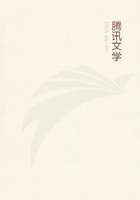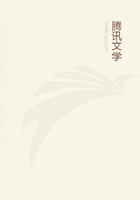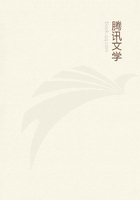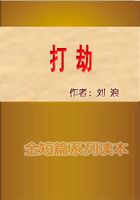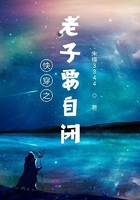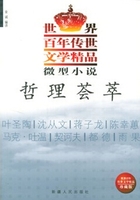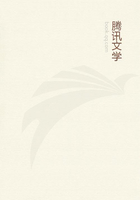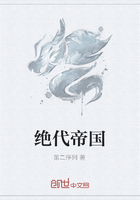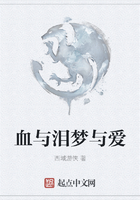The known person least unlike Mr. Courthope's late 'maker' was 'Mussel-mou'd Charlie Leslie,' 'an old Aberdeenshire minstrel, the very last, probably, of the race,' says Scott. Charlie died in 1782. He sang, and sold PRINTED ballads. 'Why cannot you sing other songs than those rebellious ones?' asked a Hanoverian Provost of Aberdeen. 'Oh ay, but--THEY WINNA BUY THEM!' said Charlie.
'Where do you buy them?' 'Why, faur I get them cheapest.' He carried his ballads in 'a large harden bag, hung over his shoulder.'
Charlie had tholed prison for Prince Charles, and had seen Provost Morison drink the Prince's health in wine and proclaim him Regent at the Cross of Aberdeen. If Charlie (who lived to be a hundred and two) composed the song, 'Mussel-mou'd Charlie ' ('this sang Charlie made hissel''), then this maker could never have produced 'The Queen's Marie,' nor could any maker like him. His ballads were printed, as any successful ballad of 1719 would probably have been, in broadsides.* Against Mr. Child and Mr. Courthope, then, we argue that, after 1600, a marked decadence of the old ballad style set in-
-that the old style (as far as is known) died soon after Bothwell Brig (1679), in the execrable ballads of both sides, such as 'Philiphaugh,' and that it soon was not only dead as a form in practical use, but was entirely superseded by new kinds of popular poetry, of which many examples survive, and are familiar to every student. How, or why, then, should a poet, aiming at popularity, about 1719-1730, compose 'The Queen's Marie' in an obsolete manner?
The old ballads were still sung, indeed; but we ask for proof that new ballads were still composed in the ancient fashion.
*See, for example, Mr. Macquoid's Jacobite Songs and Ballads, pp.
424, 510, with a picture of Charlie.
Secondly, WHY, and how tempted, would a popular poet of 1719 transfer a modern tragedy of Russia to the year 1563, or thereabouts? His public would naturally desire a ballad gazette of the mournful new tale, concerning a lass of Scottish extraction, betrayed, tortured, beheaded, at the far-off court of a Muscovite tyrant. The facts 'palpitated with actuality,' and, since Homer's day, 'men desire' (as Homer says) 'the new songs' on the new events.
What was gained by going back to Queen Mary? Would a popular 'Musselmou'd Charlie' even know, by 1719, the names of the Queen's Maries? Mr. Courthope admits that 'he may have been helped by some ballad,' one of those spoken of, as we shall see, by Knox. If that ballad told the existing Marian story, what did the 'maker' add? If it did NOT, what did he borrow? No more than the names could he borrow, and no more than the name 'Hamilton' from the Russian tragedy could he add. One other thing he might be said to add, the verses in which Mary asks 'the jolly sailors' not to 'Let on to my father and mother But that I'm coming hame.'
This passage, according to Mr. Courthope, 'was suggested partly by the fact of a Scotswoman being executed in Russia.' C. K. Sharpe also says: 'If Marie Hamilton was executed in Scotland, it is not likely' (why not?) 'that her relations resided beyond seas.' They MAY have been in France, like many another Hamilton! Mr. Child says: 'The appeal to the sailors shows that Mary Hamilton dies in a foreign land--not that of her ancestors.' Yet the ballad makes her die in or near the Canongate! Moreover, the family of the Mary Hamilton of 1719 had been settled in Russia for generations, and were reckoned of the Russian noblesse. The verses, therefore, on either theory, are probably out of place, and are perhaps an interpolation suggested to some reciter (they only occur in some of the many versions) by a passage in 'The Twa Brithers.'*
*Child, i. 439.
We now reach the most important argument for the antiquity of 'The Queen's Marie.' Mr. Courthope has theoretically introduced as existing in, or after, 1719, 'makers' who could imitate to deception the old ballad style. Now Maidment remarks that 'this ballad was popular in Galloway, Selkirkshire, Lanarkshire, and Aberdeen, AND THE VERY STRIKING DISCREPANCIES GO FAR TO REMOVE EVERY SUSPICION OF
FABRICATION.' Chambers uses (1829) against Sharpe the same argument of 'universal diffusion in Scotland.' Neither Mr. Child nor Mr.
Courthope draws the obvious inferences from the extraordinary discrepancies in the eighteen variants. Such essential discrepancies surely speak of a long period of oral recitation by men or women accustomed to interpolate, alter, and add, in the true old ballad manner. Did such rhapsodists exist after 1719? Old Charlie, for one, did not sing or sell the old ballads. Again, if the ballad (as it probably would be in 1719) was PRINTED, or even if it was not, could the variations have been evolved between 1719 and 1802?
These variations are numerous, striking, and fundamental. In many variants even the name of the heroine does not tally with that of the Russian maid of honour. That most important and telling coincidence wholly disappears. In a version of Motherwell's, from Dumbartonshire, the heroine is Mary Myle. In a version known to Scott ('Minstrelsy,' 1810, iii. 89, note), the name is Mary Miles.
Mr. Child also finds Mary Mild, Mary Moil, and Lady Maisry. This Maisry is daughter of the Duke of York! Now, the Duke of York whom alone the Scottish people knew was James Stuart, later James II.
Once more the heroine is daughter of the Duke of Argyll, therefore a Campbell. Or she is without patronymic, and is daughter of a lord or knight of the North, or South, or East, and one of her sisters is a barber's wife, and her father lives in England!--(Motherwell.)
She, at least, might invoke 'Ye mariners, mariners, mariners!' (as in Scott's first fragment) not to carry her story. Now we ask whether, after the ringing tragedy of Miss Hamilton in Russia, in the year of grace 1719, contemporaries who heard the woeful tale could, between 1719 and 1820, call the heroine--(1) Hamilton; (2)

